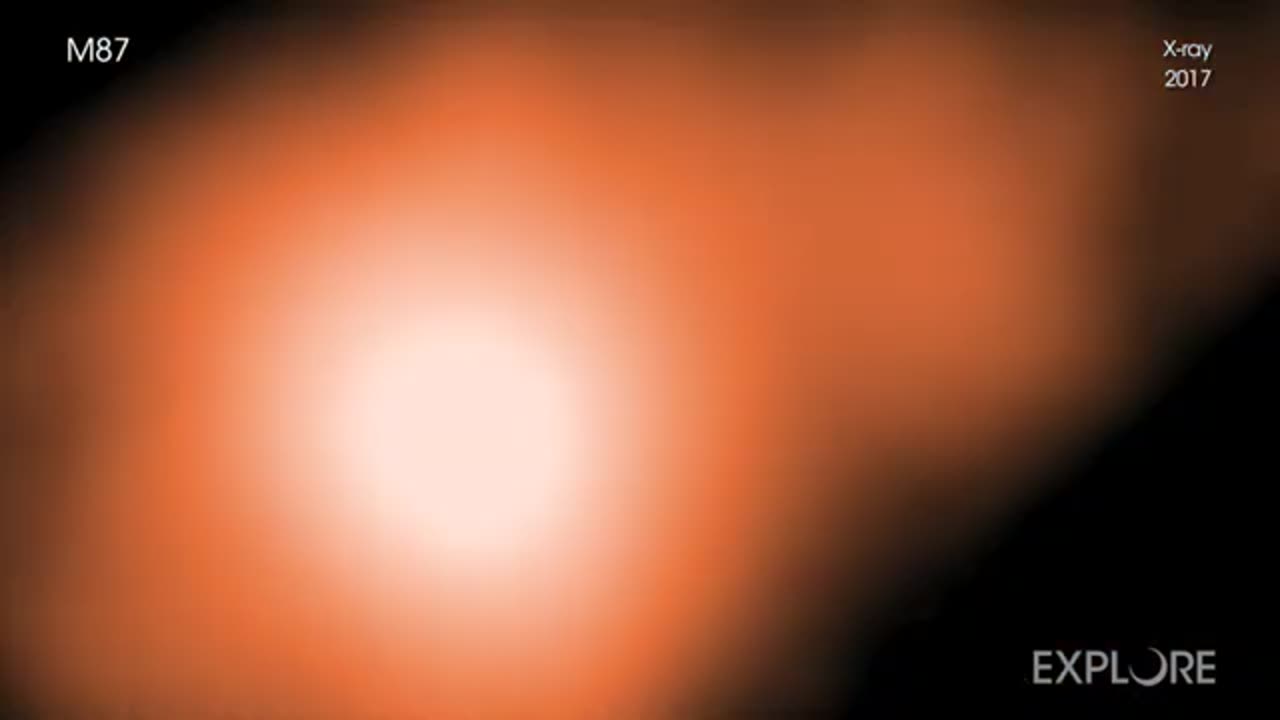Premium Only Content

A Tour of the Black Hole Jet in M87
Using NASA's Chandra X-ray Observatory, astronomers have seen that the famous giant black hole in Messier 87, or M87, is propelling particles at speeds greater than 99% of the speed of light.
The Event Horizon Telescope Collaboration released the first image of a black hole with observations of Messier 87 last April, making it arguably the Universe's most famous black hole.
Meanwhile, astronomers have studied a jet of high energy particles — powered by the black hole — blasting out of the center of M87 in radio, optical, and X-ray light for many years.
Over its two decades of operations, Chandra has observed M87 many times. And now, researchers used Chandra's data to determine that sections of the jet in M87 are moving at nearly the speed of light.
While astronomers have observed features in the M87 jet blasting away from its black hole this quickly at radio and optical wavelengths for many years, this provides the strongest evidence yet that actual particles are traveling this fast.
When matter gets close enough to a black hole, it enters into a swirling pattern called an accretion disk. Some material from the inner part of the accretion disk falls onto the black hole and some of it is redirected away from the black hole in the form of narrow beams, or jets, of material along magnetic field lines. Because the material can fall onto the black hole erratically, the jets are made of clumps or knots that can sometimes be identified with Chandra and other telescopes.
A team of astronomers recently used Chandra observations from 2012 and 2017 to track the motion of two X-ray knots located within the jet about 900 and 2,500 light years away from the black hole. The X-ray data show motion with apparent speeds of 6.3 times the speed of light for the X-ray knot closer to the black hole and 2.4 times the speed of light for the other.
While this sounds like it breaks the laws of physics, it's actually an illusion that occurs when objects are traveling close to the speed of light along a direction that is close to our line of sight. The jet travels almost as quickly toward us as the light it generates, giving the illusion that the jet's motion is much more rapid than the speed of light. In the case of M87, the jet is pointing close to our direction, resulting in these exotic apparent speeds.
The Chandra data are an excellent complement to what the Event Horizon Telescope, or EHT, found. The jet Chandra sees is five hundred thousand times larger in size than the ring imaged by the EHT. Another difference is that the EHT observed M87 over six days in April 2017, giving a recent snapshot of the black hole. The Chandra observations investigate ejected material within the jet that was launched from the black hole hundreds and thousands of years earlier. Astronomers are looking forward to seeing what else these telescopes can learn about black holes in the years to come.
-
 LIVE
LIVE
TheManaLord Plays
4 hours agoMANA SUMMIT - DAY 1 ($10,200+) | BANNED PLAYER SMASH MELEE INVITATIONAL
311 watching -
 LIVE
LIVE
Major League Fishing
2 days agoLIVE Tackle Warehouse Invitationals Championship, Day 2
172 watching -
 LIVE
LIVE
GamerGril
1 hour agoScream Queens 💕 Goth & Gore 💕 Unpossess
100 watching -
 LIVE
LIVE
CassaiyanGaming
4 hours agoMYSTIVITHON - 12 HOUR CHARITY STREAM 🌊
50 watching -
 2:14:16
2:14:16
Lara Logan
17 hours agoSTANDING AGAINST THE GLOBAL ELITE with Trump Ally President Milorad Dodik of Republika Srpska | Ep34
19K10 -
 LIVE
LIVE
FoeDubb
3 hours ago🏰KINGDOM MENU: 👑CHILL CONVO 🏈RANK FOOSBALL 🎮DELTA FORCE PEW PEWS DILLY DILLY!!!
46 watching -

PixiEars_
1 hour agoBDAY STREAM
1042 -
 LIVE
LIVE
Total Horse Channel
19 hours ago2025 Reno Snaffle Bit Futurity | Saturday
2,041 watching -
 1:22:10
1:22:10
Michael Franzese
4 hours agoI'm Calling Out All The Nonsense From The Left & "New" Epstein Files
62.3K48 -
 4:06:45
4:06:45
Grant Cardone
5 hours ago10X Wealth System LIVE: Keep More. Pay Less. Build Faster.
11.7K1